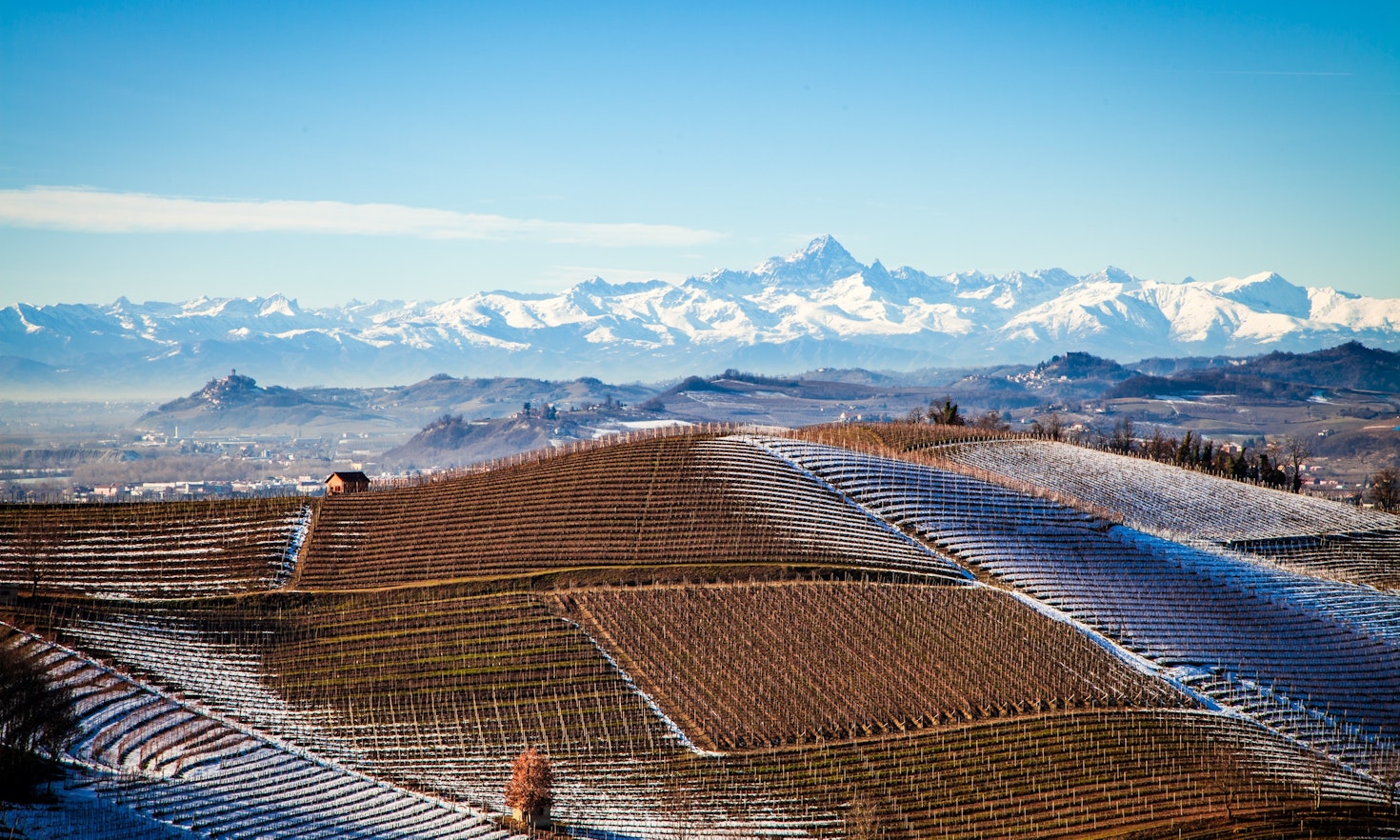
The Fundamental Rights of the EU on the 20th anniversary of the Charter
 Ana María Carmona Contreras
Ana María Carmona Contreras
Delimited by the Pyrenees to the west and the Alps to the east, roughly coinciding to the region that corresponds to what today is called the Midi - the southern portion of France - lies the wide region where the language of the Trobadors (Troubadours) seduced hearts and minds across the courts of Western Europe. From the late 11th century, by employing a vernacular derived from Latin, Old Occitan1, those refined composers popularized their fascinating lyric poetry, chanting rhymes about chivalry, courtly love and, at times, satires. The art of trobar - inventing rhymes and combining them with melodies or applying pieces of music to poetry - blossomed in Provence, rapidly expanded to the rest of the Òc-speaking territories2, eventually also flourishing in Catalonia and the Iberian Peninsula, as well as in the Po Valley all the way down to the Italian Peninsula. In the latter case, the subalpine and cisalpine territories corresponding to contemporary Piedmont, i.e. the medieval County of Savoy, Marquisate of Saluzzo and Marquisate of Montferrat, experienced which had originated on the other side of the Alps. Supposedly, it was not only the geographic proximity that determined the quick diffusion of the art of Troubadours, but rather the belonging to akin linguistic spheres (an interconnectedness that has led the French philologist Paul Meyer to look at Piedmont as “prolongement” of France itself). Indeed, all the Alpine valleys south of the Susa Valley down to the border with Liguria, have historically been inhabited by Occitan-speaking populations, whose vernaculars and community of speakers - putting aside linguistics’ dialectal categories - are a cisalpine attachment of Provence, or better Prouvènço. In the rest of Piedmont, the ambivalence of (Old) Piedmontese - the westernmost section of the Gallo-Cisalpine cluster of idioms - notably ambivalent vis-à-vis French and Italian and intimately related to the linguistic developments and historical trends of its transalpine neighbors, favored the expansion of the Troubadour schools.
Indeed, in the De Vulgari Eloquentia, it was Dante himself who, while examining the vernaculars spoken across medieval Italy, came to call the vulgare (vernacular) of Turin and Alessandria turpissimum, a condition determined by these cities’ peripheral position, where linguistic intermingling prevailed over “purity”. Thanks to the Troubadours and through the medium of Old Occitan, profane subjects for the first time prevailed over religious topics and a vernacular language - Old Occitan - against the prestige of Latin. After almost two centuries of popularity, the activity of trobar started to decline between the 13th and the 14th centuries along with the French Kingdom’s irreversible incorporation of the Occitan-speaking south, namely through the Count of Toulouse, the Count of Provence and the Duchy of Aquitaine, also inaugurating also the gradual but steady decay of the Òc language. Although fascinating, it is not only the cultural innovations introduced by the Troubadours that can be considered interesting per se, but rather, this represents the perfect historical and fabled background against which the diversity that still characterizes today’s Piedmont can be unveiled.
Piedmont is most often simply regarded through the lens of the Risorgimento. However, it contains fascinating cases of - often neglected - minority or minoritized communal experiences: a number of socio-cultural minorities that surely deserve more attention. As mentioned above, the links between Provence and Piedmont are not limited to mere commonalities but do indeed consist in shared collective stories. The intangible ways that carried the trends of the Troubadours to Piedmont are precisely the same that brought to the east the creed of the Cathars, an anti-materialist and ascetic movement influenced by Bulgarian Bogomils accused of heresy and persecuted by the Catholic Church. Communities of Cathars, bons chrètiens or bons hommes, soon also proliferated in Piedmont, a spinoff of the same cultural sphere. Similarly, the Waldensians - another medieval movement that also preached apostolic poverty and also originated in Southern France - had found haven. Their descendants have managed to live until today, conserving both their (Reformed) faith, being also part of the Occitan- and French-speaking minorities of Piedmont. After them, by the end of the 14th century, another group from Provence came to enrich the cultural pluralism of Piedmont, it was the Jews of the Pope, the Jews that inhabited the Comtat Venaissin, the surroundings of the papal city of Avignon. Fascinatingly, these Provençal Jews, expelled from France in 1384, took with them their peculiar liturgical traditions and rite, their surnames, along with their Judeo-Provençal language, or Shuadit, being the forefathers - together with other groups of Ashkenazim and Sephardim - of the Piedmontese Jewish community. The peculiar rite of Provençal Jews was thus maintained in Piedmont and evolved into a unique minhag (custom) known as APAM, acronym of the Jewish communities living in the Montferrat, i.e. Asti, Fossano (Phossan) and Moncalvo. Also, the Judeo-Provençal tongue they spoke contributed to shaping Judeo-Piedmontese, preserving distinctive Provençal-derived features with respect to the dialects of the others Italkim (Jews of Italy). Since their expulsion from France, Piedmontese Jews, not without trials and tribulations, continued to live uninterruptedly in Piedmont, reaching full emancipation in 1848, when King Carlo Alberto granted civil and political rights to Jews and Waldensians. It was then the brutal antisemitism of Fascist Italy that marked the almost irreversible decline of this unique Piedmontese community. Also, the connections between Southern France and Piedmont are not uniquely testified by linguistic affinity, the Provençal origin of Piedmontese Jews,- or by the role that the French language played in this territory as langue de la societé. In addition, it is by looking at the distinctive community of Piedmontese Sinti, the Sinti Piemontákeri, that the cultural diversity of Piedmont is uncovered in its multiple dimensions. Indeed, the Piedmontese Sinti allegedly hail from France too, bearing French surnames in many cases. After their settlement in the 15th century, familiar ties still unite this Romani population on the two sides of the Alps, with some communities of Piedmontese Sinti living in southeastern France, representing the ring that connects Northern Italian Sinti and the French Manouches. Interestingly, the main daily newspaper of Piedmont has recently published an accurate, although for more than one reason regrettable, article stating the fascinating indigenousness of Piedmontese Sinti: “Piedmontese here is the language of the Sinti. It is so rooted within them that the other Piedmontese, in order to differentiate themselves, have ceased speaking it.”
When it comes to consider the Occitan valleys of Piedmont, cultural recognition - an act of acknowledgment and protection - has resulted in being misleading for the proper identification and defense of minority groups. The Law n. 482 of 15th December 1999 “Norms concerning the protection of historical linguistic minorities” has since offered a frame for the extension of cultural recognition to those linguistic minorities historically rooted in a given territory (storicamente radicata), and allowed 15% of the municipal constituency to demand the status of historical linguistic minority. Due to the “self-determining” declaration of adherence to the linguistic minority status, enshrined in the law mentioned above, the geographic area of the Occitan linguistic minority today is far bigger than that of the truly Occitan-speaking one, and now includes municipalities which historically belonged to the Piedmontese or Ligurian dialectal areas. In truth, only 74 of the 109 municipalities (70% of the total) that declared they belong to the Occitan sphere do in fact contain an Occitan-speaking population. Moreover, to make matters worse, the groups that advocate for the full-fledged cultural recognition and preservation - and to a lesser political autonomy - of the Òc-speaking communities of Piedmont have historically been divided along opposing ideological lines, further blurring and weakening the prospects of emancipation of the communities in question. In fact, cultural and political revival emerged in the early 70s under the influence of a self-exiled intellectual of Toulouse who advocated for the union of what he considered the Occitan nation, which stretched from the Aran valley all the way through Southern France until the alpine valleys of Piedmont. This brand of Occitan nationalism - eventually politicized by the short-living Occitan Autonomist Movement - which melted ethnicistic, nationalist and anti-colonial elements together, popularized the toponym and ethnonym “Occitan”, previously unutilized by the Òc-speaking valley dwellers who simply referred to their speech as a nosto modo (in our way). Since then, the Occitan movement in Piedmont has been strongly tied to the Occitanists of Southern France and thereby to their main center of cultural and linguistic promotion, the Toulouse-based Institut d’Estudis Occitans (IEO) - it is worth noting the assonance with the Institut d’Estudis Catalans -. As opposed to the aforementioned faction, an early wave of enthusiasts of the Òc language had been operating since the early 60s in Piedmont, stressing their historical bonds to Provence, working in harmony with Provençal mistraliens - the adherents to the 19th century cultural association founded by Frédéric Mistral and mainly rooted in Provence -, and therefore rejecting both the Pan-Occitan nationalist agenda and the use of the IEO-sponsored orthographic norm. To date, the most active centers fort the promotion of the Òc linguistic patrimony of the Piedmontese valleys derive from the former movement.
Now, the Medieval troubadouresque phenomenon surely helps to shed lights on the cultural ties which traverse the Alps, providing the historical background for the study of the minority groups of Piedmont whose roots are to be found on the other side of Alps. However, it is the distorting outcomes of the current legislative frameworks on historical linguistic minorities, and the jeopardizing effects of intra-communitarian political rivalry, that are rather questionable. In legislation, the territorial dimension required of a group to ascertain its minority status does in fact hamper the protection of those minorities who are rather dispersed across a given territory, i.e. Piedmontese Sinti. For them, the criteria of radicamento storico and territory contrast the diffused nature of their community, impeding the enjoyment of cultural recognition and collective rights. Possibly, it is the nature itself of the legislative measures for the protection of historical linguistic minorities to be unfit to the empirical reality. Indeed, on the one hand, the Occitan-speaking region, although spatially bigger than it really is, continues to be subject to material impoverishment, depopulation, and linguistic decay. On the other hand, the Piedmontese Sinti are overtly discriminated, and, besides their socioeconomic disadvantages, are still deprived of any sort of collective rights. Perhaps, rather than sticking to a sterile policy of formal cultural recognition, what is most desirable is the accommodation of different collective rights claims through diverse theoretical mechanisms and devices, namely territorial autonomy - when it is feasible - as in the cases of Occitan speakers in Piedmont, and some sort of non-territorial autonomy for what concerns the Piedmontese Sinti. For, if it is true that Piedmont, as Primo Levi describes in the Preface to the volume “Ebrei a Torino: ricerche per il centenario della sinagoga: 1884-1984,” would not be the same if Jews had not been contributing to intellectual and social life at all its levels, I believe that the same statement does also apply to the Occitans (or Alpine Provençals) and Sinti inhabiting Piedmont, all of whom animate the multiple and layered identities of those westernmost fragments of today’s Italy. In truth, politics of recognition and territorial autonomy are not merely theoretical or legislative devices but do respond to the need of rectification of the centuries-long marginalization, mystification, and denial of targeted groups.
To have a broader understanding of the linguistic diversity in Italy and the Italian system of asymmetric regionalism, it may also be useful to read the paper “Language Realities and Policies in Italy: Multifaceted, Multilevel, Asymmetric” by Elisabeth Alber.

This content is licensed under a Creative Commons Attribution 4.0 International license.

 Ana María Carmona Contreras
Ana María Carmona Contreras
 Aspen Brooks
Aspen Brooks
 Martina Trettel
Martina Trettel